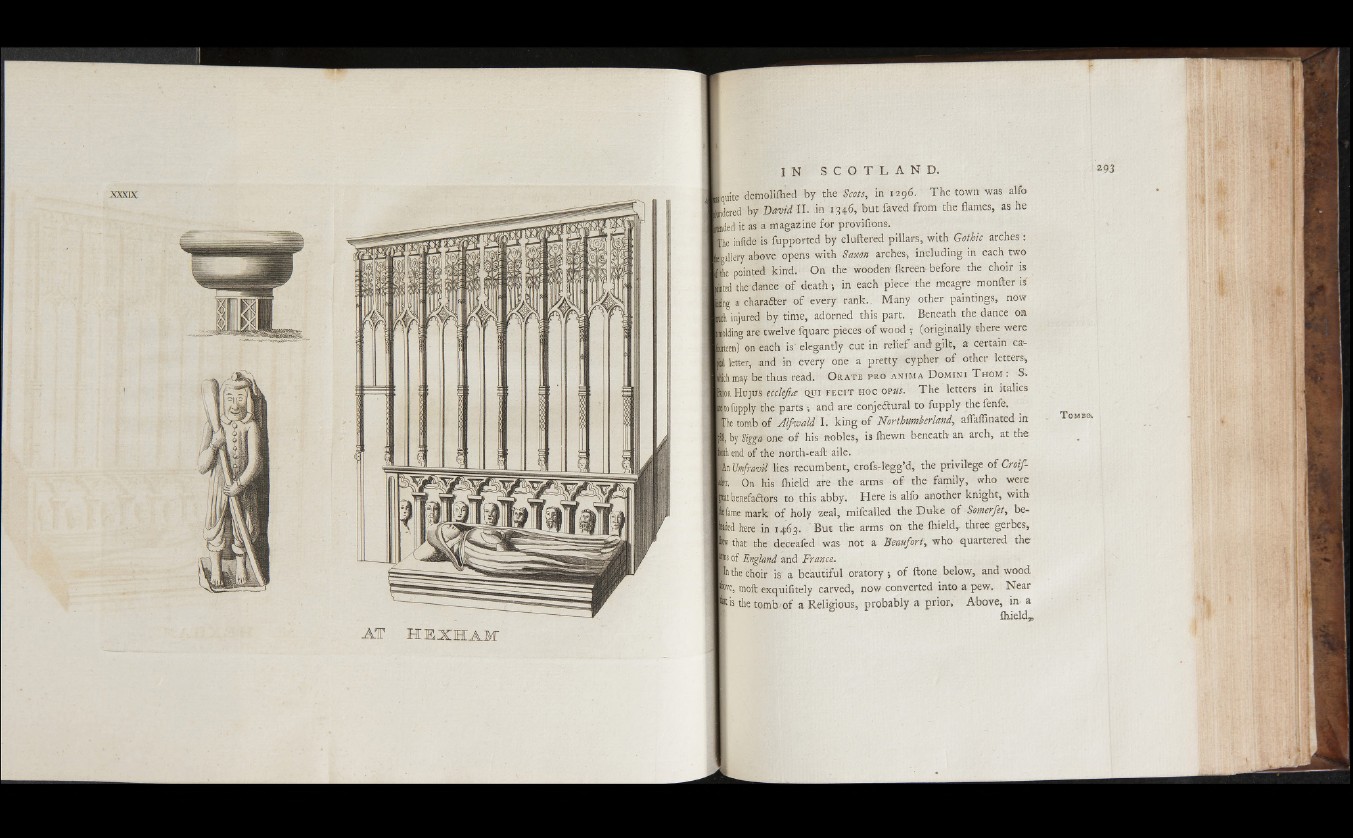
A T H E X H A M
{quite demolilhed by the Scots, in 1296. The town was alfo
Idered by David 11. .in 1346, but faved from the flames, as he
Ided it as a magazine for proviflons.
fche infide is fupported by cluttered pillars, with Gothic arches :
■¡nailery above opens with Saxon arches, including in each two
K e pointed kind. On the wooden ikreen- before the choir is
M b the-danee of death; in each piece the meagre monfter \i
ting a charafter of every rank.. Many other paintings, now
K h injured by time, adorned this part. Beneath the dance on
^Biding are twelve fquare pieces of wood j (originally there were
Keen) on each is' elegantly cut in relief and gilt, a certain ca-
ipital letter, and in every one a pretty cypher of other letters,
Ijfch may be thus read. O r a t e p r o a n i m a D o m i n i T h o m . S,
B i o r H u j u s ecclejia q u i f e c i t h o c opus. The letters in italics
Ktofupply the parts ; and are conjeitural to fupply the fenfe.
■frhe tomb of Alfwald I. king of Northumberland, aflaflinated in
liS, by Sigga one of his nobles, is lhewn beneath an arch, at the
K h end of the north-eaft aile.
H n Umfravil lies recumbent,, crofsrlegg’d, the privilege of Croif-
Ifin. On his ihiel'd are the arms of the family, who were
Beit benefaftors to this abby. Here is alfo another knight, with
Blame mark of holy zeal, mifcalled the Duke of Somerfet, be-
K»1 here in 1463.. But the arms on the fhield, three gerbes,
Bw that the deceafed was- not a Beaufort’, who quartered the
of England and France*
I In the choir is a beautiful oratory 5 of ftone below, and wood
moft exquifitely carved, now converted into a pew.. Near
B is the tomb'of a Religious, probably a prior. Above, in. a
ihield,
T o M B G-.